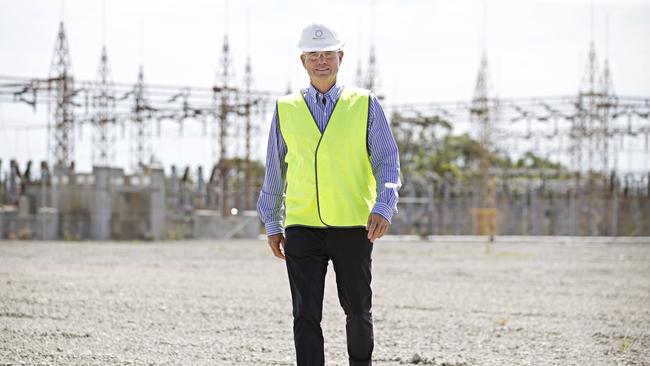Snowy targets 2023 for huge Hunter gas plant
Snowy’s gas plant is designed to run during high demand and when solar and wind supplies aren’t available, filling a gap once AGL Energy’s Liddell coal plant closes in the 2022-23 summer.

Snowy Hydro’s proposed $610m gas-fired power plant in NSW’s Hunter Valley is expected to deliver an internal rate of return topping 10 per cent as it targets first output by late 2023 to ease a forecast supply shortfall.
The mooted Kurri Kurri ‘peaker’ facility is designed to run during high demand and when solar and wind supplies aren’t available, filling a gap once AGL Energy’s Liddell coal plant closes in the 2022-23 summer.
While the government-owned Snowy is yet to approve the power station, chief executive Paul Board said on Thursday the rate of return would eclipse 10 per cent, helping balance renewables in the power grid.
“Without dispatchable and firming generation or grid scale storage, a power system that is solely reliant on intermittent renewable generation will have unacceptable levels of customer supply failure,” Snowy said in its environmental impact statement lodged on Thursday.
Talks have been held with Jemena over accessing gas supplies from the Sydney-Newcastle pipeline and also with energy giant Santos over receiving output from its proposed Narrabri gas project. Critically, it is not reliant on any new gas project proceeding and can access enough capacity from the existing Sydney-Newcastle pipeline to prop up the project.
Funding for Kurri Kurri is included in a bucket of funding set aside by the Morrison government for projects that have yet to be sanctioned amid expectations the plant will eventually receive the green light from Canberra.
Scott Morrison told companies to commit 1000 megawatts of new supply by an April 30 deadline or it would build its own 650MW plant through Snowy Hydro at Kurri Kurri.
EnergyAustralia subsequently committed to expand its existing Tallawarra gas power plant in NSW’s Illawarra with a 350MW facility even as debate swirls over how much extra supply is warranted once the 1680MW Liddell exits. Official forecasts by the Australian Energy Market Operator only indicate a shortfall of less than 200MW.
Snowy laid out the reasoning for the Kurri Kurri development on Thursday in its EIS which referenced AEMO’s prediction of a supply shortfall.
“AEMO has advised the Australian Government that with the closure of Liddell Power Station in 2023, there will be a gap in dispatchable capacity that will need to be filled through the addition of firming capacity. The Proposal’s primary aim is to substantially contribute to meeting this need,” Snowy said in its EIS.
Snowy said a combination of supply options would be needed to back up intermittent renewables as Australia cuts its reliance on coal-fired power in the next two decades. Gas and hydro would play a part but Snowy said batteries would have a limited role while hydrogen was uneconomic.
“Batteries are inherently limited by their storage capacity (megawatt hours or MWh) relative to their MW capacity, dictating how long they can operate in a single continuous period of generation. Energy storage systems such as those using hydrogen are not presently economical,” Snowy said.
“Conversely, a peaking power station using natural gas virtually has no restriction on when it can produce dispatchable energy within a day, and the duration for which it can continuously provide that energy across that day.”
Kurri Kurri may only run for two per cent of the time using both gas and diesel according to Snowy which already runs Colongra power station, NSW’s largest gas-fired plant nearby on the Central Coast.
“The Proposal is being designed and approval is being sought to operate at a capacity factor of up to 10 per cent on natural gas and up to two per cent on diesel in any given year. However, it is expected that likely operations would result in a capacity factor of about two per cent in any given year,” Snowy said.
“This means that in an average year, the proportion of actual energy generated by the Proposal, compared with its potential output if operated at full load for every hour of the year (expressed as megawatt hours), would be in the order of two per cent.”
Other projects including the proposed Andrew Forrest backed Squadron Energy 650MW gas and hydro generator, are also in the mix but have yet to be signed off.
The Morrison government included $30m in the federal budget for early works on Mr Forrest’s Port Kembla gas project allowing the billionaire to push ahead with the project while still assessing potential funding via the Underwriting New Generation Investments scheme where it remains on the shortlist.
Mr Forrest aims to start supplying electricity from Port Kembla during 2024.


To join the conversation, please log in. Don't have an account? Register
Join the conversation, you are commenting as Logout